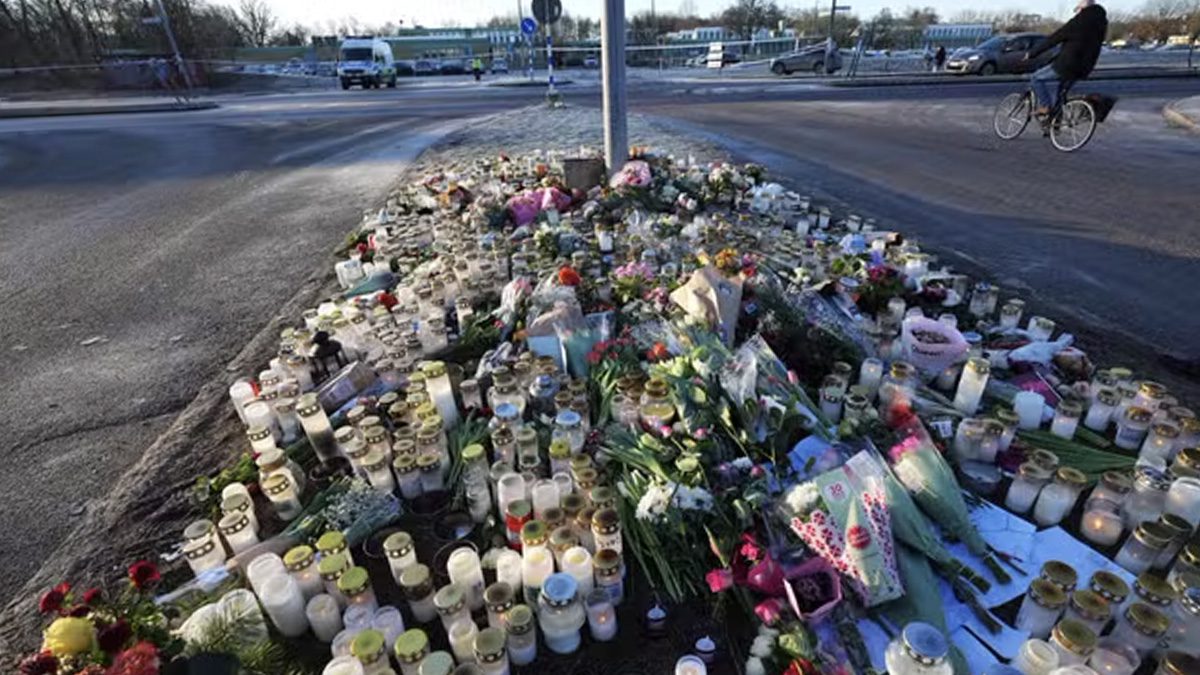On February 4, 2025, ten people were brutally murdered at the SFI (adult education center) in Örebro. According to Moderate Prime Minister Ulf Kristersson, Sweden has experienced “the worst mass shooting” in its history. A significant number of the victims were of immigrant background, but so far, investigators have not classified the crime as “racist” or “terrorist”.
While the United States frequently faces such tragedies, Europe is now witnessing an increasing number of mass killings on its own soil. What are the reasons behind this surge in deadly attacks across the continent?
The Progressive Rise of Mass Killings in Europe
In the early 2000s, the world was stunned by Gus Van Sant‘s film Elephant, a dramatization of the tragic Columbine school shooting, where two high school students opened fire on their classmates. The film is particularly striking as it delves into the psychological profiles of mass shooters, a pattern that has been repeatedly observed in real-life tragedies.
In the United States, the constitutional right to bear arms partly explains the recurrence of such tragedies. Some high schools have even installed security checkpoints to detect firearms at entrances. In Europe, particularly in France, mass killings were long associated with Islamist terrorism. However, in recent years, a new phenomenon—imported from the United States—has been gaining ground: mass shootings.
Significant Mass Shootings in Europe
-
Since the 2010s, Europe has witnessed several mass shootings, though the phenomenon remains less frequent than in the United States. Among the most tragic events was the Utøya massacre in Norway (2011), where Anders Behring Breivik killed 77 people in a terrorist attack. Germany also experienced deadly incidents, including the Winnenden school shooting (2009), where a teenager killed 15 people, and the Munich attack (2016), which left 9 dead. Other notable incidents include the Cumbria shooting (2010) in the UK (12 deaths), the Hanau attack (2020) in Germany, motivated by xenophobic ideologies (9 deaths), and the Liège shooting (2011) in Belgium (6 deaths). In Sweden, the Trollhättan school attack (2015), where an assailant killed a teacher and a student, shook the nation. Serbia, too, was hit by the Mladenovac shooting (2023), in which a gunman killed 8 people.
More recently, the Risbergska Campus shooting in Örebro, Sweden (2025), has been deemed the worst mass shooting in the country’s history, with 10 victims. The perpetrator, Rickard Andersson, a 35-year-old man, acted without a clearly identified motive, though suspicions of a racial agenda have surfaced. Unlike the United States, where such tragedies are often linked to widespread gun availability and untreated mental health issues, mass shootings in Europe are more commonly associated with extremist ideologies, psychological crises, or personal revenge. This surge in mass shootings across Europe highlights the need for stricter preventive policies, including monitoring high-risk profiles and regulating firearm access.
The Örebro Attack: A Turning Point for Sweden
On February 4, 2025, Rickard Andersson entered Risbergska Campus in Örebro and murdered ten people, many of whom were immigrants.
Unlike Anders Behring Breivik, who saw himself as a “crusader” calling for a war against Islam, Rickard Andersson left no digital footprint. What is known is that he was rejected from the military three times, was unemployed, and lived in isolation. His lack of social media presence makes it difficult to establish a clear motive.
However, the Swedish state had granted him a firearm license, and he allegedly used one of his registered weapons to carry out the attack. In the absence of digital evidence or explicit statements, it is challenging for authorities to classify the crime as racially motivated. However, the choice of target—a campus hosting many immigrant students—could be interpreted as circumstantial evidence.
What is Causing the Rise in Mass Shootings in Europe?
One of the main factors explaining the spread of mass shootings is the overexposure in the media. When an attack is widely reported, with details about the perpetrator, their motives, and how they carried out the crime, it can unintentionally inspire other vulnerable individuals seeking recognition. This phenomenon, known as the Werther Effect, is a psychological concept explaining how exposure to sensationalized violent acts can incite copycat behavior. In the United States, where mass shootings receive extensive media attention, studies have shown that such incidents tend to increase after a major attack, suggesting a form of mimicry. In Europe, this effect may be amplified by the globalized nature of information, with social media and streaming platforms facilitating widespread exposure.
Another key factor behind the rise in mass shootings is access to firearms. While the United States remains the country with the highest rate of gun ownership, Europe has also seen an increase in the illegal circulation of weapons, often linked to conflicts in the Balkans and the Middle East. In Sweden, where gang-related gun violence has risen in recent years, the Örebro shooting demonstrates the ongoing struggle to control the proliferation of firearms. When a vulnerable individual gains easy access to guns, the risk of escalating from violent ideation to deadly action increases significantly.
Finally, social and psychological factors play a crucial role in the spread of these violent acts. Mass shooters often share similar profiles: social isolation, undiagnosed psychological disorders, resentment toward society, or extremist ideological beliefs. Many of these individuals feel alienated and resort to violence as a means of asserting their existence or seeking revenge. The rise of online communities dedicated to extremist or nihilistic discourse has further fueled this trend. Some mass shooters draw inspiration from the manifestos of previous killers, attempting to surpass their predecessors or carve out their own place in this dark legacy. This combination of isolation, frustration, and media fascination with mass violence has created fertile ground for these tragedies, which, though still rarer in Europe than in the United States, appear to be on the rise.
